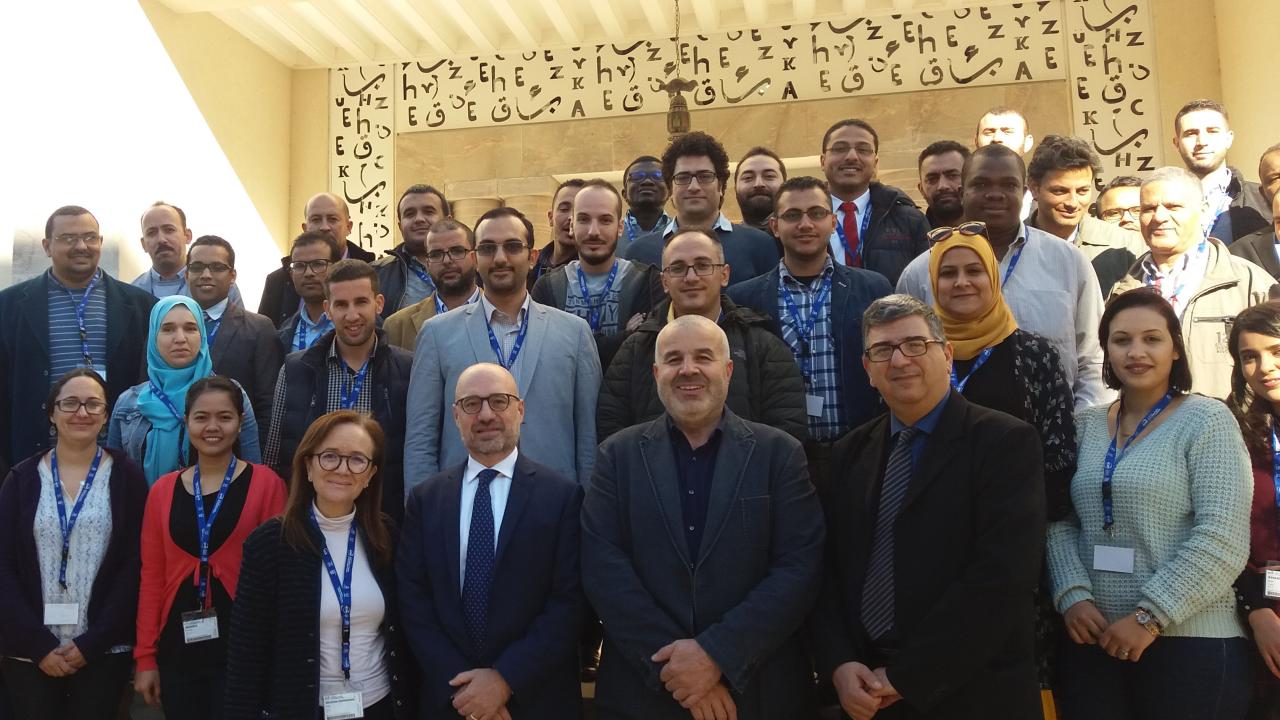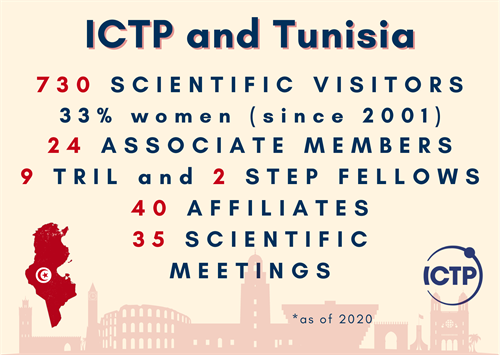
Seismologist and ICTP collaborator Najla Bouden Romdhane was named the new Prime Minister of Tunisia at the end of September, the first woman to hold that role in the country, and in the Arab world. She is a professor of earthquake engineering at the Tunis National School of Engineering, University of Tunis El Manar, and she had previously held a position within the Tunisian Ministry of Higher Education.
Romdhane has visited Trieste and ICTP several times over the years, in the context of research projects related to the study of earthquake hazards. In particular, Romdhane visited Trieste in 2016 on the occasion of events organised by ICTP in conjunction with the commemoration of the 40th anniversary of the 1976 Friuli earthquake. This was an opportunity to inaugurate a regional-led project on the reduction of seismic hazards in Tunisia, Algeria and Iran. The project was coordinated by ICTP geophysicist Abdelkrim Aoudia, and had the aim of promoting scientific collaboration between the involved countries, with research projects on earthquake and tsunami hazards and the associated risks.
"We have known each other for more than 20 years now, since the time when we created NAGET in 2000," says Aoudia. "This was a very powerful network of earthquake scientists, managed by the late Assia Harbi. Najla was part of the Steering Committee and coordinated the Tunisian leg of the network."
NAGET (the North African Group for Earthquake and Tsunami Studies) is an international scientific network aimed at collaboration between researchers from universities and research centers in North African countries, including Algeria, Tunisia, Morocco, Egypt, Lybia and Sudan.
Romdhane also co-organised international ICTP schools in Tunisia and North Africa, including a school in Tunis on "Earthquake and Tsunami Models and Observations" in 2018, of which she was a local director. Many of her students visited ICTP over the years, or collaborated in research projects with ICTP scientists.
The projects in which she collaborated with ICTP aimed to raise national capability in vulnerable countries and increase their resilience, and to favour international cooperation in the framework of the North African scientific network.
"After the birth of NAGET, we continued our collaboration with two projects founded by the International Cooperation programme of the Region Friuli Venezia Giulia," says Aoudia. "Then we worked on a third, regional-lead project, when the Regional Council asked ICTP to be an instrumental institution for the implementation of a research project involving Tunisia, Algeria and Iran."
The physics and geometry of Iranian and North African earthquakes, in particular the ones in Algeria and Tunisia, are very similar to those of seismic events happening in Friuli Venezia Giulia. This makes it possible to understand events happening in these different areas by applying knowledge acquired in each country. "For example, the knowledge earned form the 1980 El Asnam earthquake in Algeria was crucial to analyse still unclear aspects from the 1976 Friuli earthquake," says Aoudia. "In the same way, another earthquake that happened in Tabas, Iran in 1978 was similar to the one in El Asnam, Algeria, and it also confirmed the Friuli's case."
The international cooperation aspect of this projects was key to create a set of knowledge and observations from different local events to better delineate a model of this type of earthquake geometry, but also to share practices of resilience and communication to the public for the benefit of the whole society. "A great example of this was a visit of a Algerian-Iranian-Tunisian delegation, including Najla Romdhane, to the headquarters of the local Civil Protection in Palmanova in 2016," says Aoudia, "which has a strong historical value. The Italian Protezione Civile was in fact born in the region as a response to the 1976 Friuli earthquake and can serve as a great model of resilience that can be transferred to least developing countries."
Najla Romdhane is one of many distinguished Tunisian scientists who have benefited from their connection to ICTP.

Former ICTP Associate Zohra Ben Lakhdar is considered one of the most prominent figures in physics in Tunisia today. She was appointed as professor of physics at Tunis El Manar University in Tunisia in 1978 and later went on to direct the university's Laboratory of Atomic-Molecular Spectroscopy and Applications. In 2005, Ben Lakhdar was honoured with the L'Oreal-UNESCO award for Women in Science.
Ben Lakhdar was also the mentor to another former ICTP Associate, Mourad Zghal, who was awarded the ICO/ICTP Gallieno Denardo Award in 2008 for his original work in the development of numerical modeling techniques for photonic crystal fibers, microstructured optical fibers, and polarization.
In 2015 another Tunisian scientist was awarded the same prize. Rim Cherif, a visiting researcher at University of Ottawa, Canada, and an Associate Professor of telecommunication engineering at Iset’Com, Tunisia, was awarded the ICO/ICTP Gallieno Denardo Award for her achievements in the field of nonlinear optics and in particular for her valuable contributions to the design of highly nonlinear fibers for supercontinuum generation.
--- Marina Menga
















